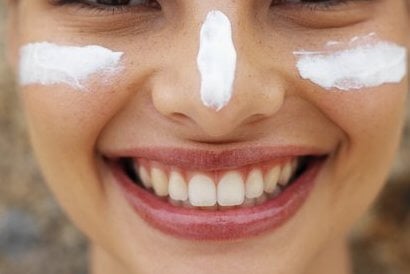You slather on your sunscreen before hitting the beach, and the next day, you’re still burnt. What gives?
In a new report by the Environmental Working Group, 73 percent of the 880 sunscreens tested by the organizations included concerning ingredients. Sonya Lunder, a senior analyst with the environmental advocacy group and lead scientist of the 2017 Sunscreens Guide, said sunscreens really aren’t what they seem.

“Sunscreens are really mismarketed, and as a result, people who depend on them think they are far more powerful than they really are,” Lunder said to CNN.
The report warns that consumers shouldn’t be fooled by a sunscreen’s Sun Protection Factor, or SPF, rating. High SPF ratings tempt people to apply limited amounts of sunscreen and stay in the sun longer, and there’s no proof that sunscreen prevents most skin cancers.
Sunscreens are designed to block UVA rays, the longer rays that affect the deeper layers of the skin, as well as UVB rays, which are short rays that damage the outer layers of the skin. The SPF ratings focus on blocking UVB rays only, focus less on UVA protection, and it can be worse with the highest SPF ratings.
“People who buy high-SPF products are more likely to get burned because they assume they’re getting better and longer-lasting protection,” Lunder said.
Lunder recommends SPF levels between 30 and 50, and the best protection comes from reapplication every few hours. For those who prefer aerosol spray sunscreens, there could be another level of concern.
Related: These Foods Can Naturally Protect Your Skin From Sun Damage
People already don’t apply enough or often, and aerosol sprays can encourage misuse. The sunscreens in spray form contain nanoparticles such as titanium dioxide that could damage the gastrointestinal tract if swallowed, the report said.
Lunder said she recommends people avoid aerosols as well as keep an eye out for certain harmful ingredients. She said oxybenzone is the first ingredient to avoid.
“[Oxybenzone] is a hormone disruptor that mimics body hormones and affects reproductive tract and other hormones,” she said.
The chemical is a weak estrogen that causes drops of testosterone in males and allergic skin reactions, the report said. The second ingredient to avoid is a form of vitamin A known as Retinyl palmitate.

Retinyl palmitate has been associated with the development of skin tumors under direct UV light, though studies have only analyzed how it reacts to UV radiation alone. Ingredients aside, the reports have been the subject of some doubt.
“While the Environmental Working Group’s 2017 Guide to Sunscreens helps raise awareness about the dangers of sun exposure and the importance of using sunscreen to prevent skin cancer, the report also contains several inaccuracies that can confuse consumers and be potentially harmful to public health,” said The Personal Care Products Council.
The EWG said more research is needed but provide a list of their best and worst-rated products. The council’s chief scientist, Beth Jonas, said the intense FDA testing and regulation of the sunscreens is sufficient.
“Consumers can rest assured that this reliable and credible testing method results in sunscreens that are safe and effective in protecting them from harmful UV rays,” Jonas said. “Broad spectrum sunscreens with SPF 30 and greater must protect against both UVB and UVA radiation. To achieve high SPF protection values, products have to screen both UVA and UVB radiation.”
Related: Going ‘Umbrella Chic’ at the Beach Won’t Prevent You from Getting a Sunburn
Tori Linville is a freelance writer and editor from Clarksville, Tennessee. When she isn’t writing or teaching, she’s faithfully watching her alma mater, the University of Alabama, dominate the football field.


![How To: ‘Fix’ Crepey Skin [Watch]](https://cdn.vitalupdates.com/wp-content/uploads/2017/05/bhmdad.png)












